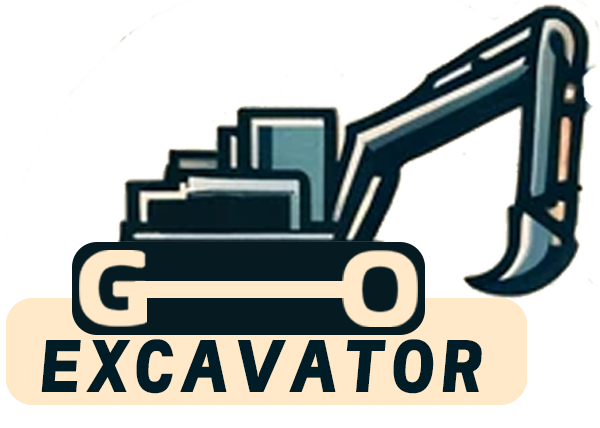
Excavators are essential machines in the construction and mining industries, designed for various tasks such as digging, lifting, and moving materials. However, not all excavators are the same. They come in different types, each tailored to specific tasks and environments.
1. Standard Excavators
What is a Standard Excavator?
Standard excavators, known as crawler excavators, are the most common type of excavator. These machines are characterized by their tracks, which allow them to operate on uneven and rough terrain. They range in size from medium to large and are often used in general construction, demolition, and large-scale earthmoving projects.
Key Features
- Tracks for Stability: The tracks provide stability and mobility on various surfaces, including mud and rocky terrain.
- Large Bucket Capacity: Standard excavators have a large bucket, making them ideal for heavy-duty digging and material handling.
- 360-Degree Rotation: The cab can rotate 360 degrees, providing a full range of motion for operators.
Best Uses
- General Construction: Ideal for tasks such as digging foundations, trenching, and material handling.
- Demolition: Equipped with attachments like breakers, standard excavators can efficiently demolish structures.
- Mining: Suitable for large-scale excavation in mining operations.
2. Mini Excavators
What is a Mini Excavator?
Mini excavators, known as compact excavators, are smaller versions of standard excavators. These machines are designed for work in confined spaces where larger machines can’t operate. Despite their smaller size, mini excavators are versatile and powerful.
Key Features
- Compact Size: The smaller footprint allows mini excavators to work in tight spaces such as urban construction sites and residential areas.
- Reduced Ground Pressure: Mini excavators exert less pressure on the ground, making them suitable for landscaping and working on delicate surfaces.
- Ease of Transport: Their compact size makes them easier to transport between job sites.
Best Uses
- Residential Construction: Perfect for digging small foundations, trenching for utilities, and landscaping.
- Roadside Work: Ideal for working on roadsides without obstructing traffic.
- Interior Demolition: Can be used indoors for tasks like demolishing walls and removing debris.
3. Long-Reach Excavators
What is a Long-Reach Excavator?
Long-reach excavators are specialized machines equipped with an extended arm and boom. These excavators are designed for tasks that require a long reach, such as working over water bodies, reaching across structures, or deep excavation.
Key Features
- Extended Arm and Boom: The extended arm allows these machines to reach areas that standard excavators cannot.
- Increased Digging Depth: Long-reach excavators can dig deeper than standard excavators, making them ideal for dredging and deep excavation tasks.
- Stable Operation: Despite their extended reach, these machines are designed to remain stable during operation.
Best Uses
- Dredging: Perfect for removing sediment from water bodies such as rivers, lakes, and harbors.
- Deep Excavation: Ideal for digging deep trenches and basements.
- Bridge Construction: Used to reach over structures and water bodies during bridge construction.
4. Wheeled Excavators
What is a Wheeled Excavator?
Wheeled excavators are similar to standard excavators but are equipped with wheels instead of tracks. This design makes them more suitable for urban environments where they need to move quickly on paved surfaces.
Key Features
- Wheeled Mobility: The wheels allow these excavators to travel faster on roads, making them ideal for urban projects.
- Stabilizers: Wheeled excavators often have stabilizers to ensure stability during digging operations.
- Versatility: Can be used in a variety of applications, from construction to road maintenance.
Best Uses
- Urban Construction: Ideal for tasks in urban areas where mobility on paved surfaces is required.
- Road Maintenance: Can be used for road repairs, ditch cleaning, and other roadside tasks.
- Material Handling: Suitable for lifting and moving materials in industrial settings.

5. Suction Excavators
What is a Suction Excavator?
Suction excavators, known as vacuum excavators, use a powerful suction mechanism to remove debris, soil, and other materials. These machines are ideal for tasks that require precision and minimal ground disturbance.
Key Features
- Suction Power: A high-powered vacuum removes soil and debris with precision.
- Minimal Ground Disturbance: These machines are ideal for excavation tasks where preserving the surrounding area is important.
- Safety: Reduces the risk of damaging underground utilities during excavation.
Best Uses
- Utility Work: Ideal for exposing underground utilities without causing damage.
- Archaeological Excavation: Used in sensitive areas where minimal disturbance is required.
- Emergency Response: Can be used in situations where quick, precise excavation is needed, such as during a gas leak.
6. Dragline Excavators
What is a Dragline Excavator?
Dragline excavators are among the largest types of excavators and are primarily used in mining and large-scale civil engineering projects. These machines use a dragline system to remove large quantities of material, typically from water bodies or mining pits.
Key Features
- Massive Size: Dragline excavators are huge machines designed for heavy-duty tasks.
- Dragline System: Uses a bucket attached to a dragline that is lowered and dragged along the surface to collect material.
- High Efficiency: Capable of moving vast amounts of material in a short time.
Best Uses
- Mining: Ideal for removing overburden in mining operations.
- Harbor Construction: Used for dredging and removing material from harbor basins.
- Large-Scale Civil Engineering: Suitable for tasks like dam construction and deep excavation projects.
Understanding the different types of excavators and their specific uses is crucial for selecting the right machine for your project. Whether you need a standard excavator for general construction, a mini excavator for tight spaces, or a dragline excavator for massive mining operations, there’s an excavator designed to meet your needs.
A Comprehensive Guide to Buying a Excavator Second Hand
Purchasing a second-hand excavator can be a cost-effective solution for your construction or landscaping needs. However, buying used machinery comes with its own set of challenges and considerations. This comprehensive guide will walk you through [...]
Comprehensive Guide to Hyundai Mini Excavators: Features and Prices
Mini excavators have become indispensable tools in the construction and landscaping industries. Hyundai Construction Equipment, a global leader in heavy machinery, offers a range of mini excavators known for their reliability, efficiency, and advanced features. [...]
How to Extend the Service Life of Excavator Parts
Excavators are indispensable machines in the construction and mining industries. They perform heavy-duty tasks that demand robust components and meticulous maintenance. Extending the service life of excavator parts not only reduces operational costs but enhances [...]
Kymron Excavators: Innovative, Sustainable Construction Machinery
In the dynamic world of construction and heavy machinery, Kymron has emerged as a game-changer. Specializing in advanced excavator technology, Kymron is redefining industry standards with its commitment to innovation, efficiency, and sustainability. Company Overview [...]
Bulldozer vs. Wheeled Excavator: Which Machine is Better for Moving Soil?
Moving soil is a fundamental task in construction, landscaping, and earthmoving projects. Choosing the right machinery for the job can significantly impact efficiency, cost, and project timelines. Two of the most commonly used machines for [...]
Why Are Small Excavators Favored? A Comprehensive Guide
In the world of construction and landscaping, efficiency and versatility are key. Among the myriad of machinery available, small excavators have risen in popularity. But what makes them so favored? Introduction to Small Excavators Small [...]




